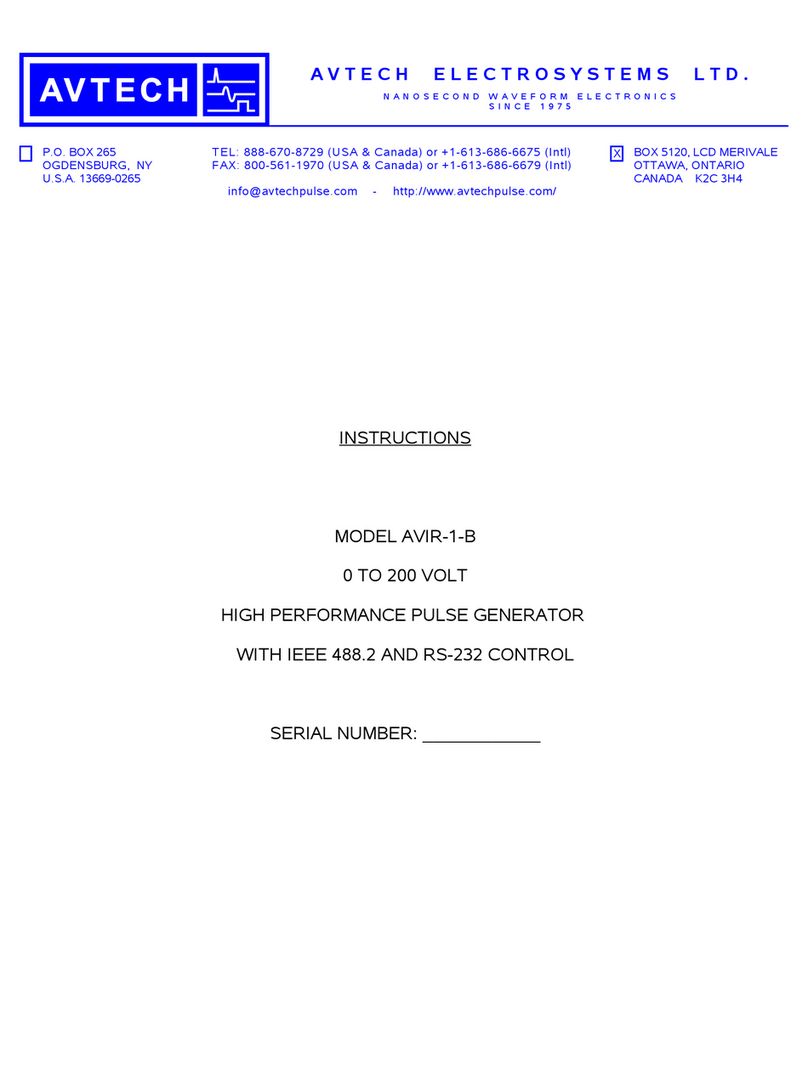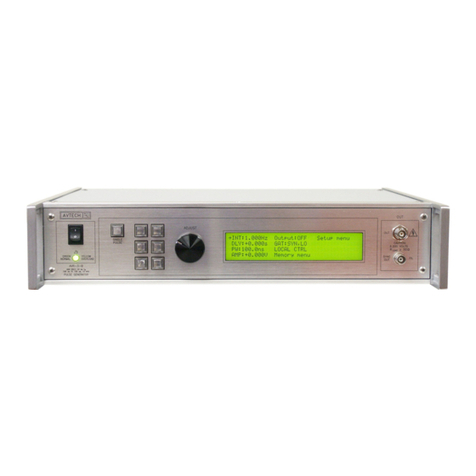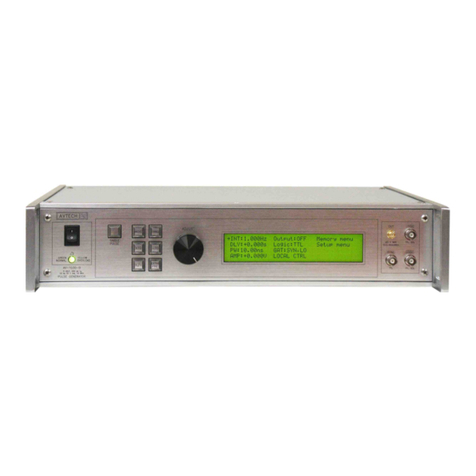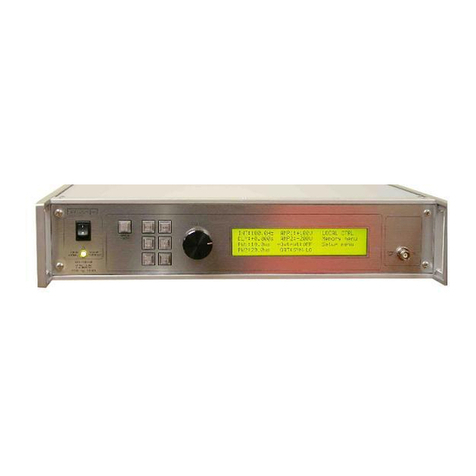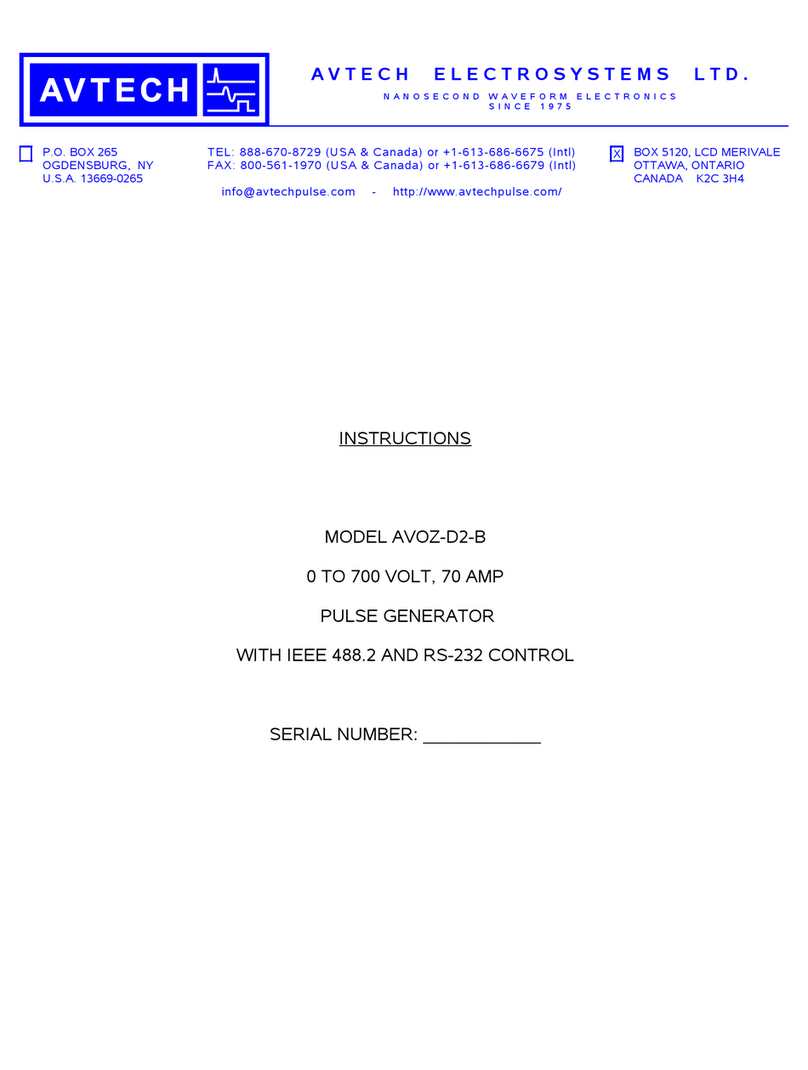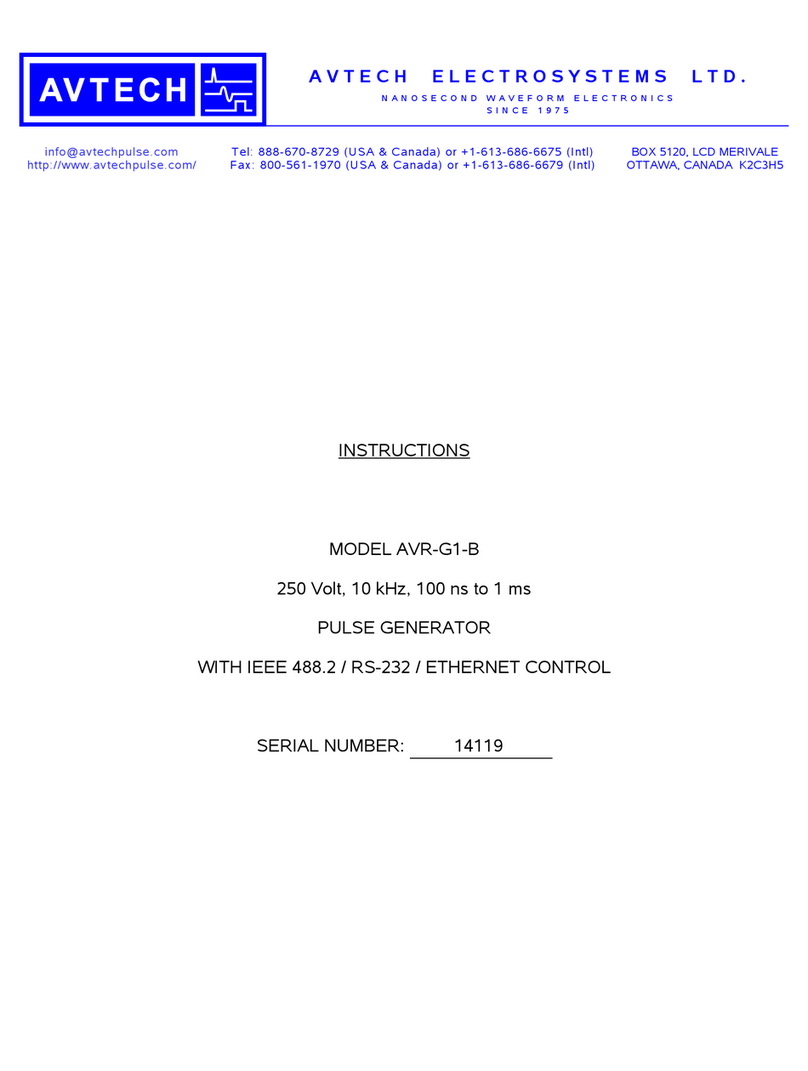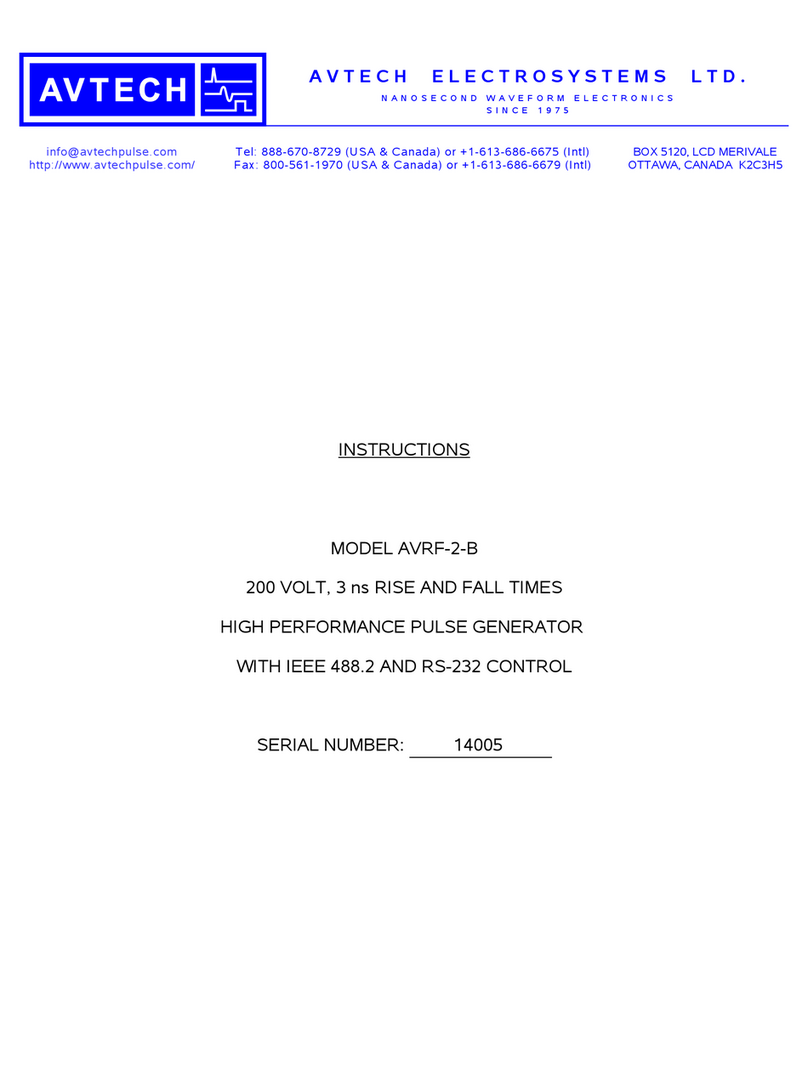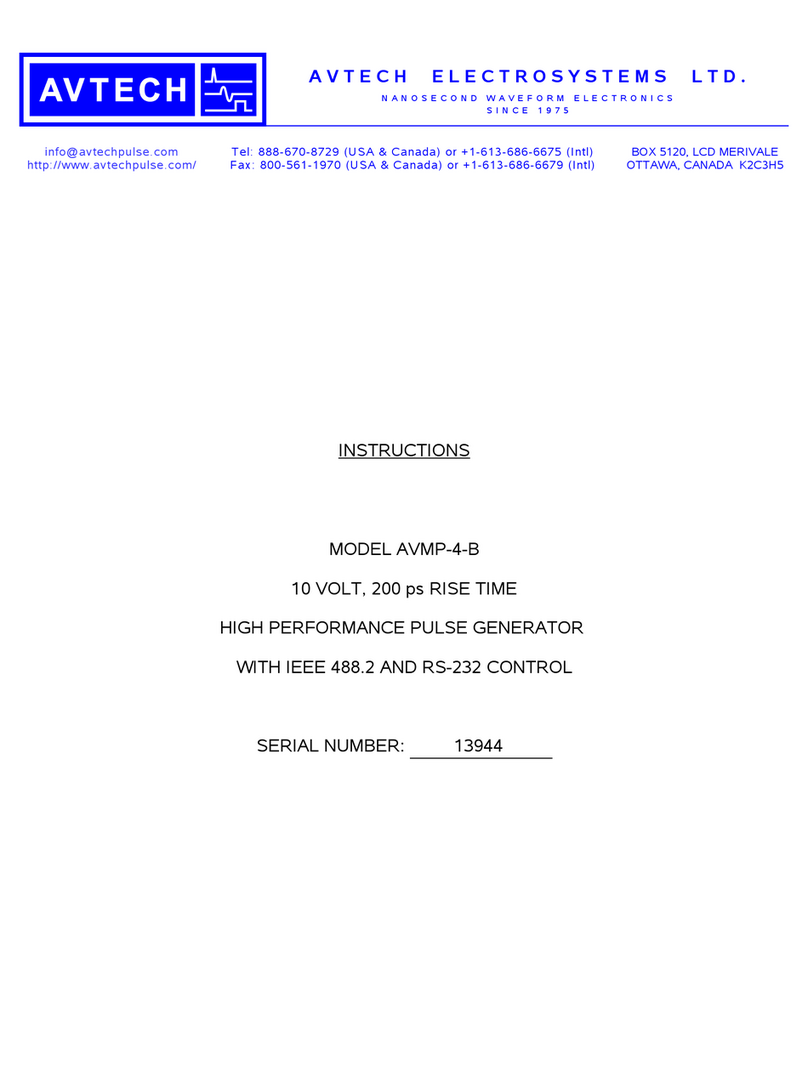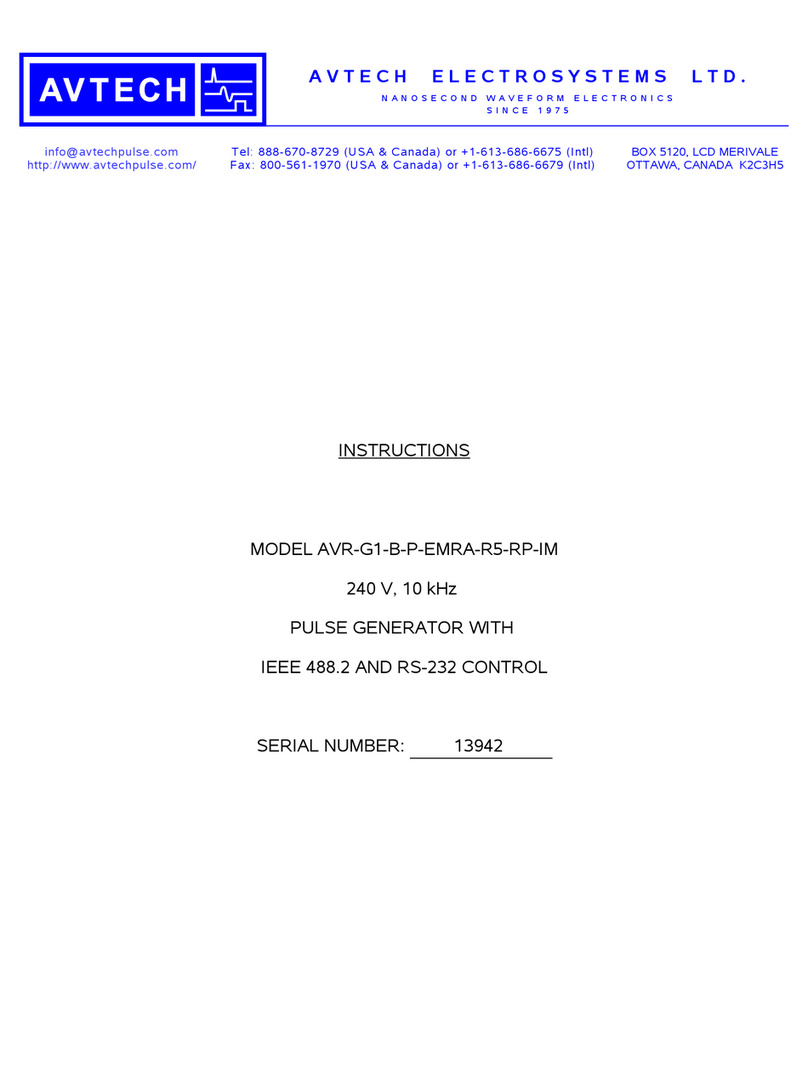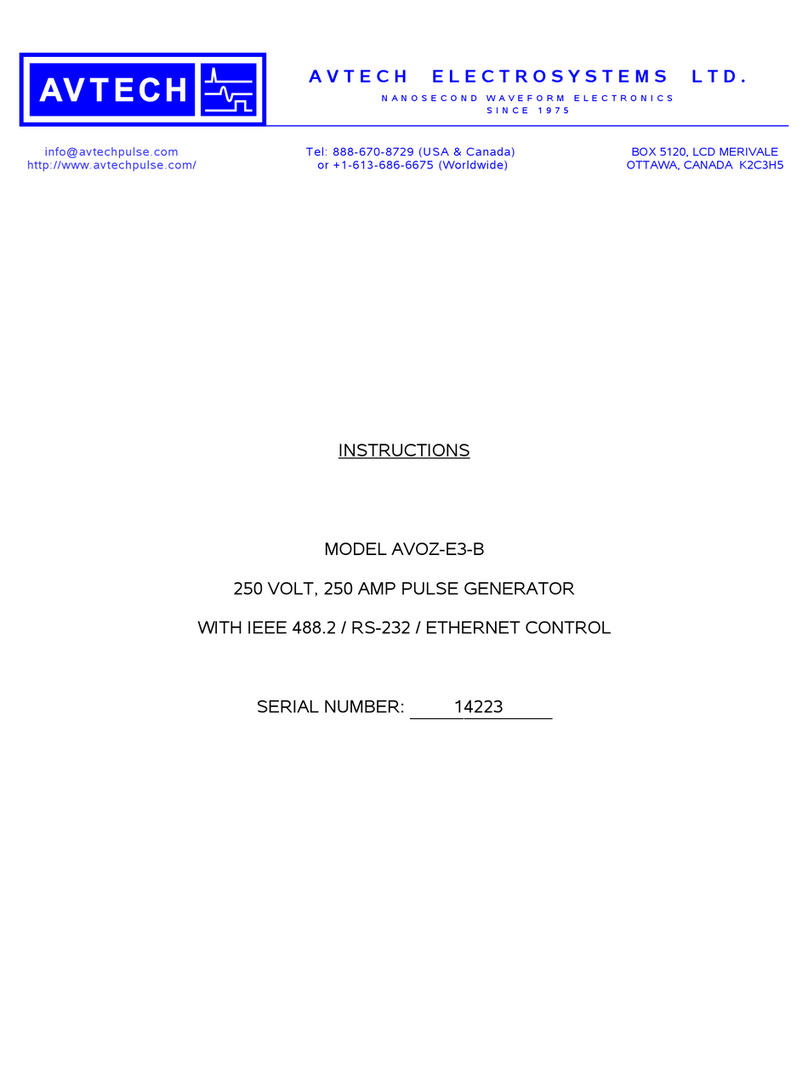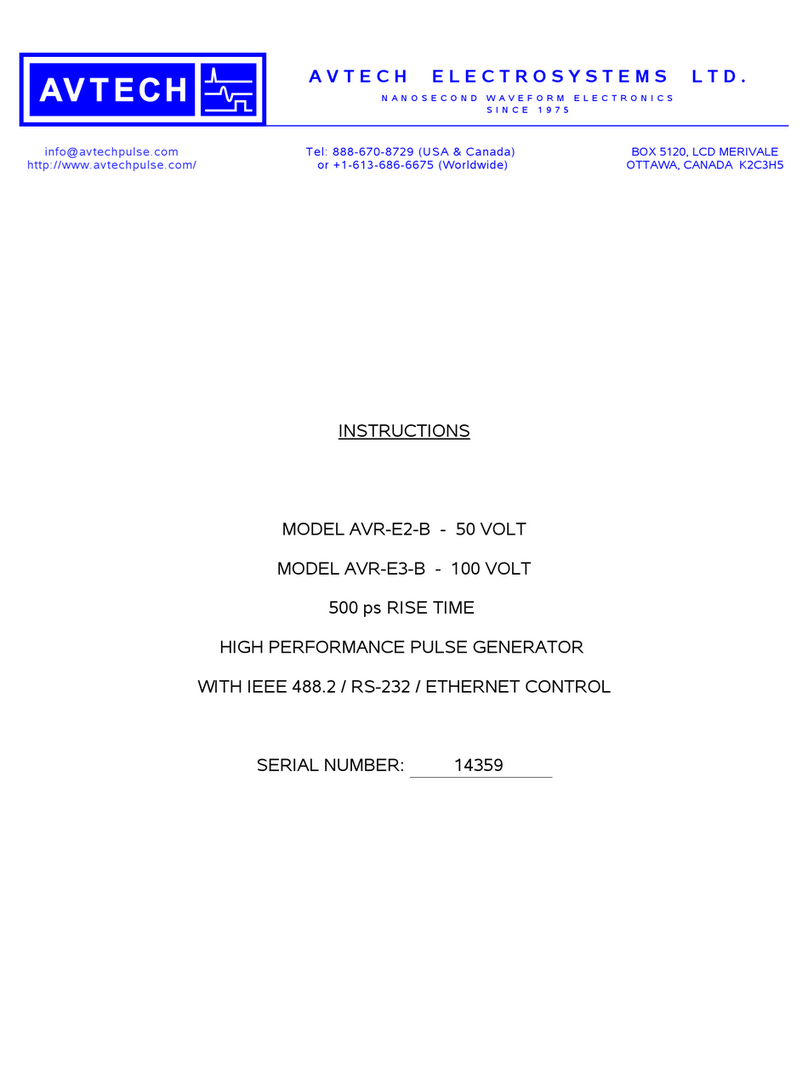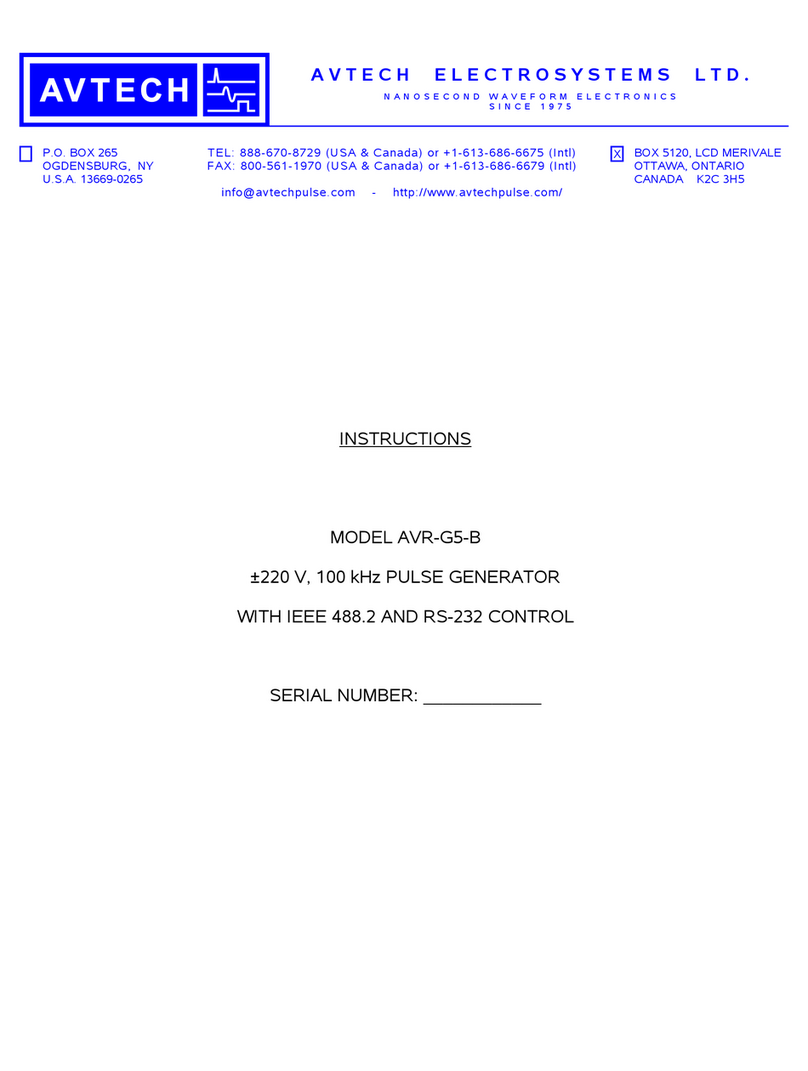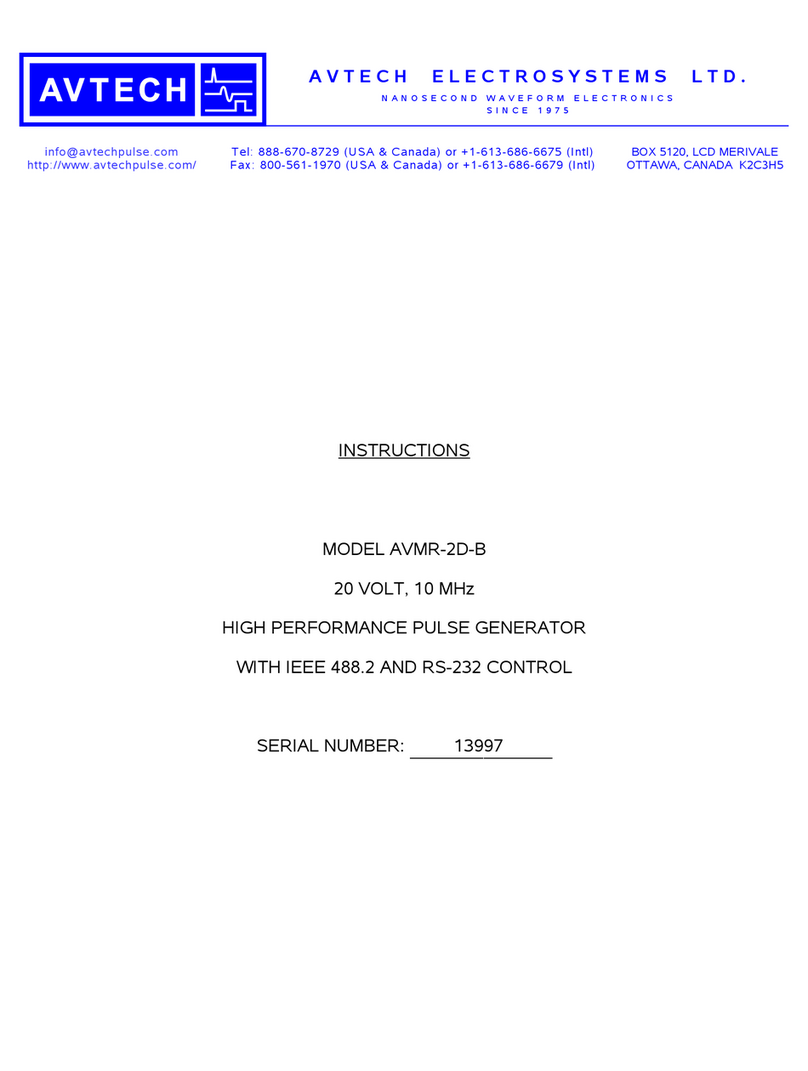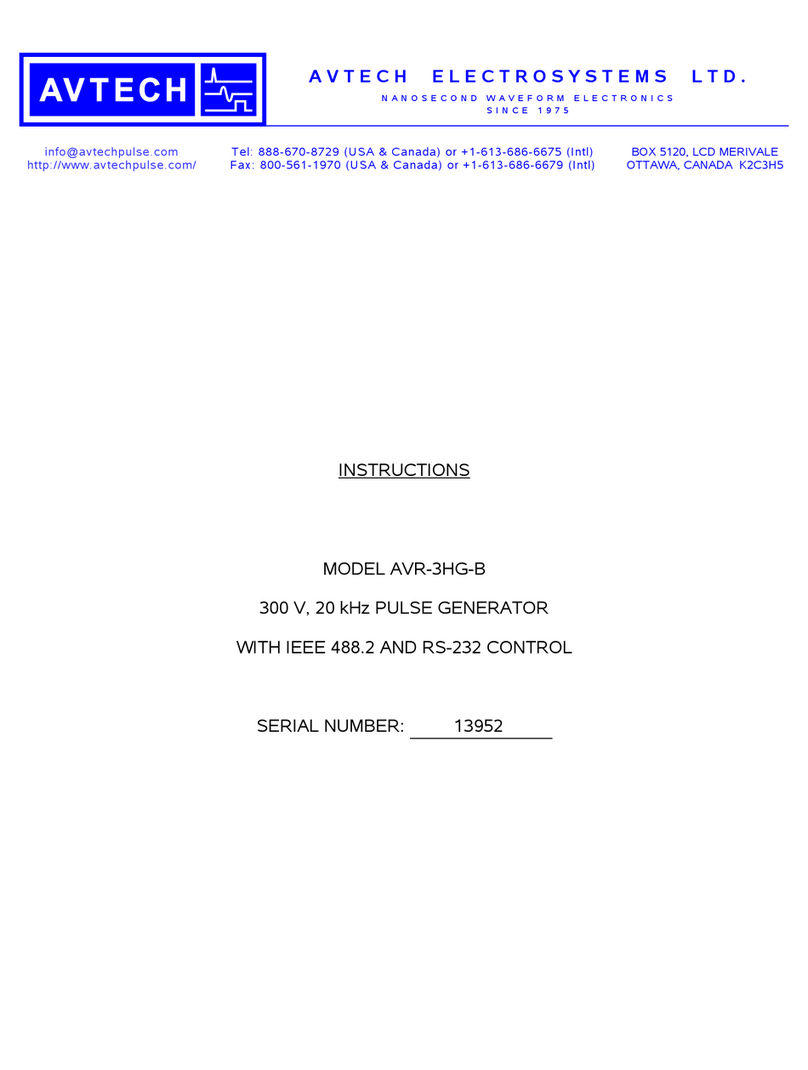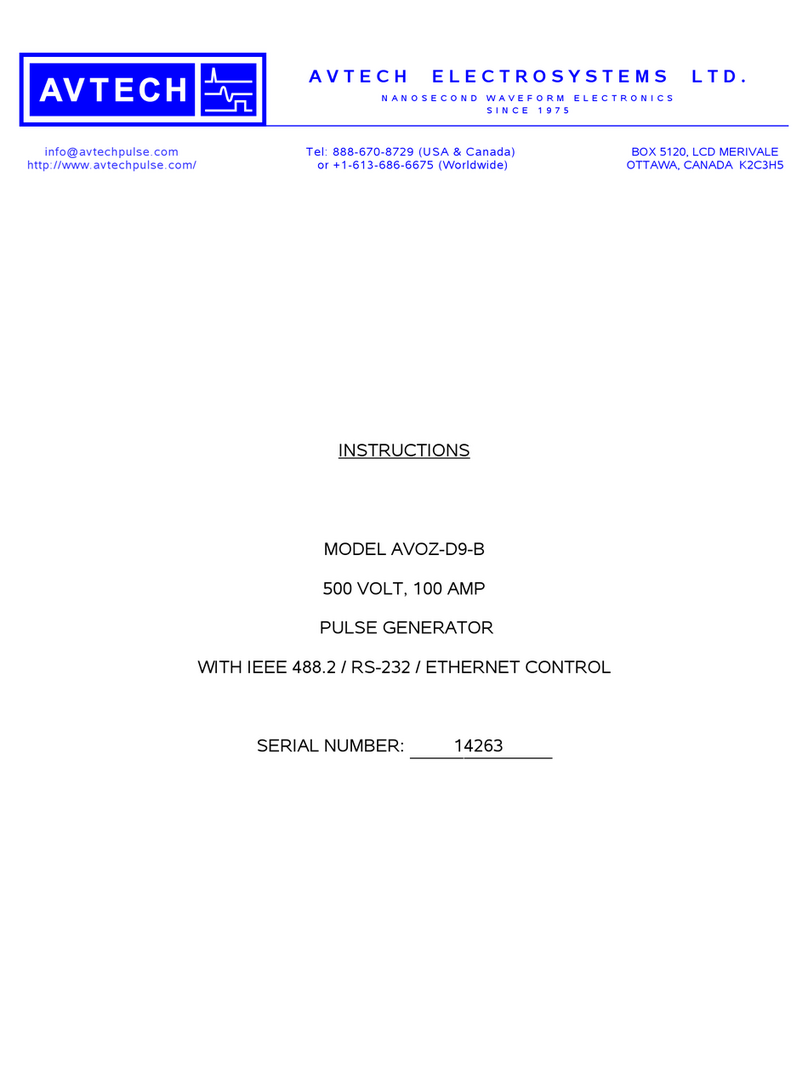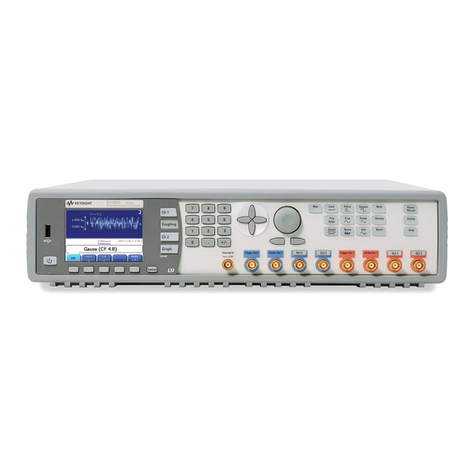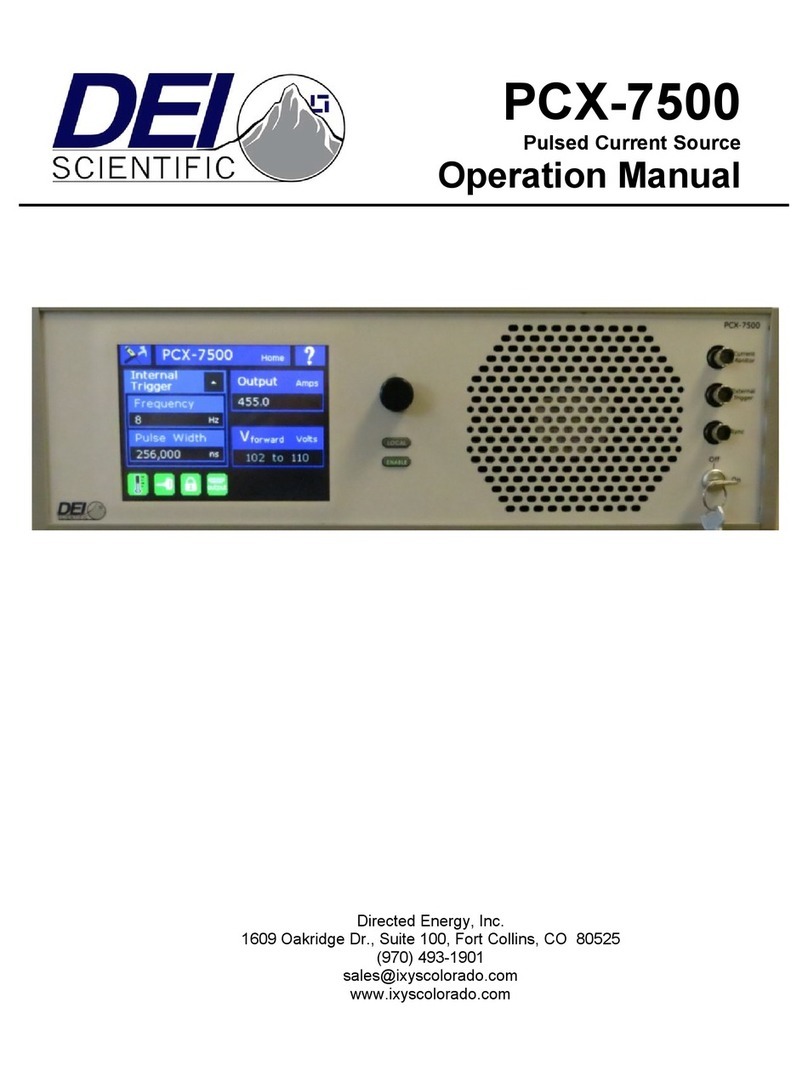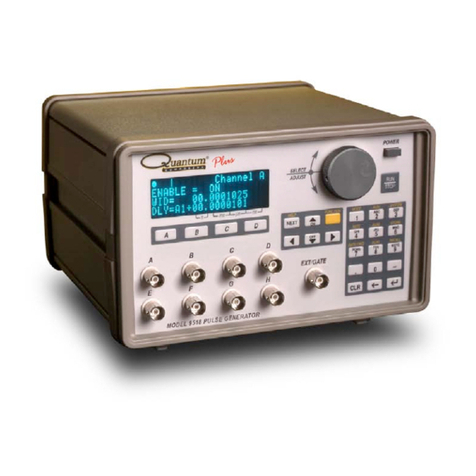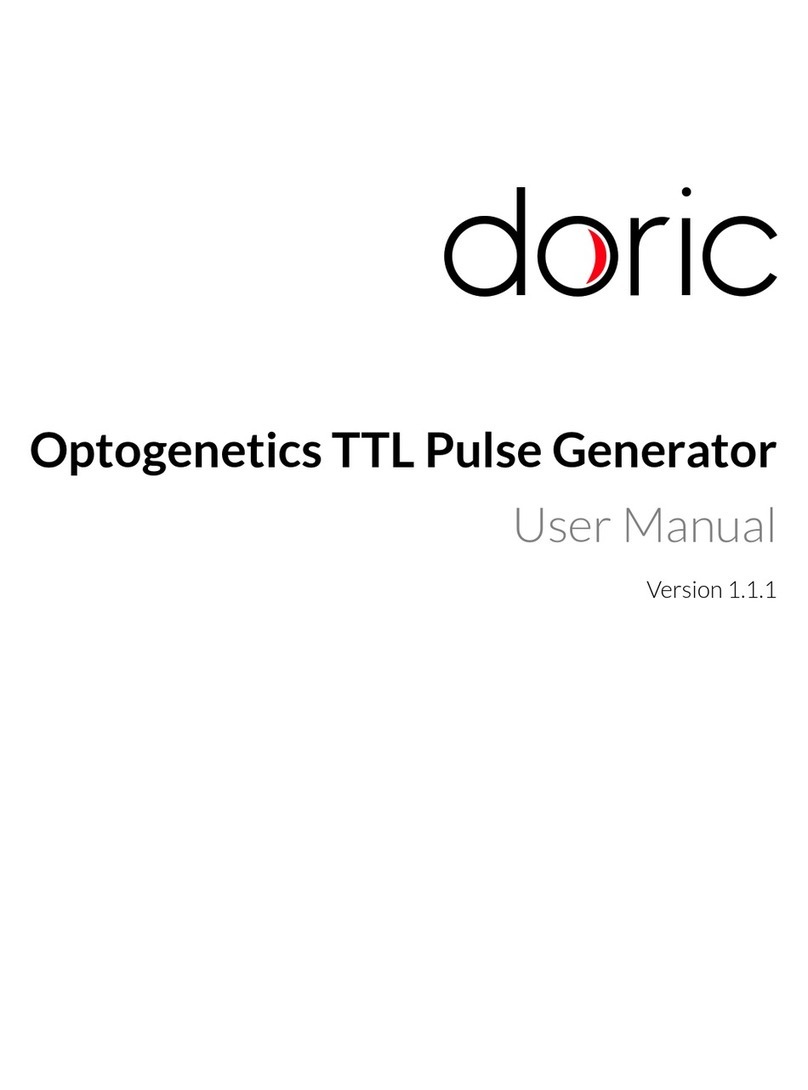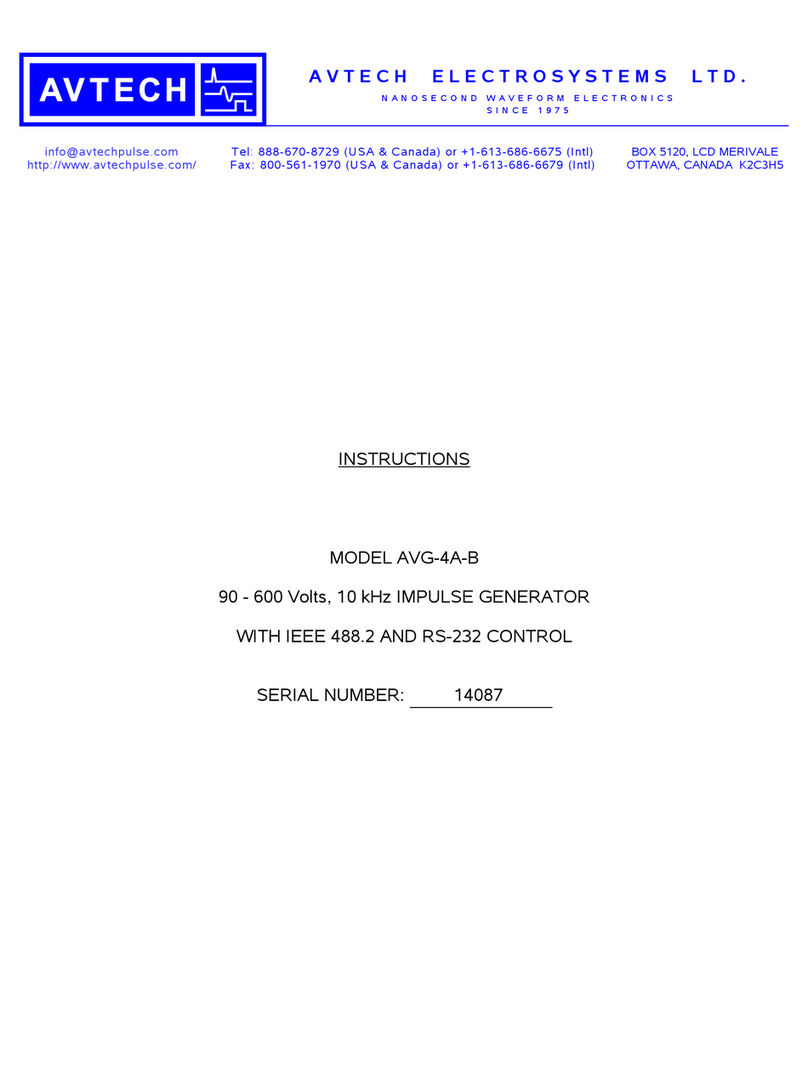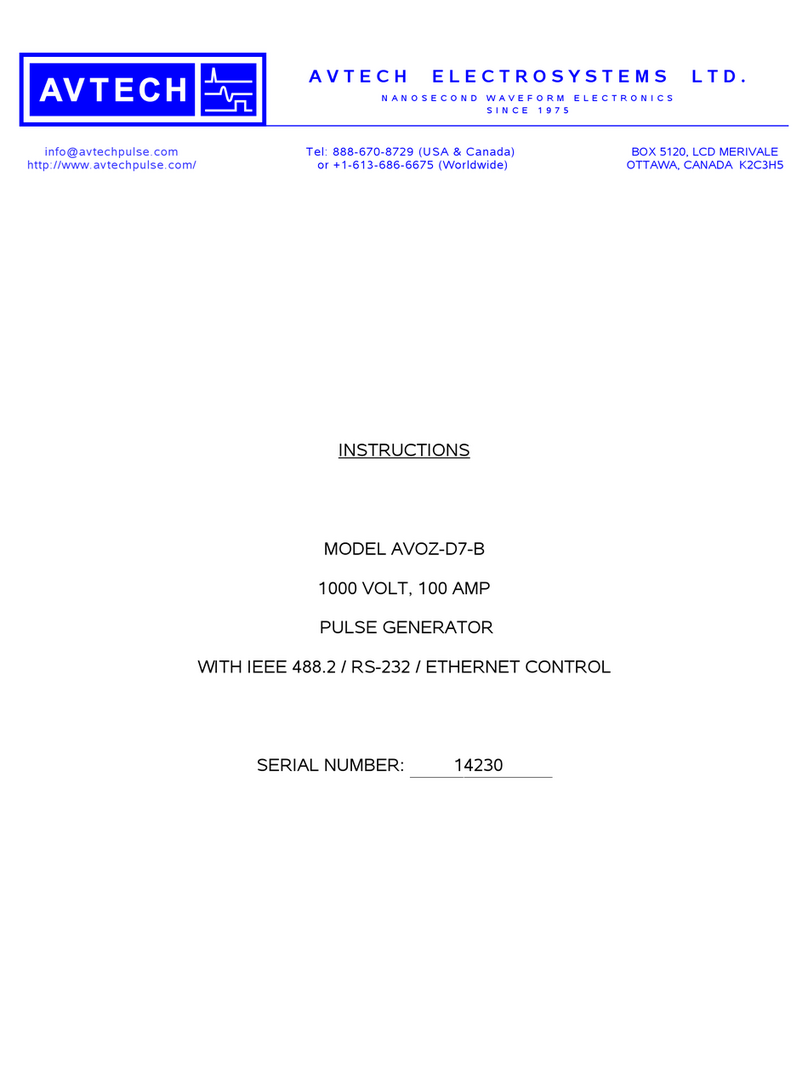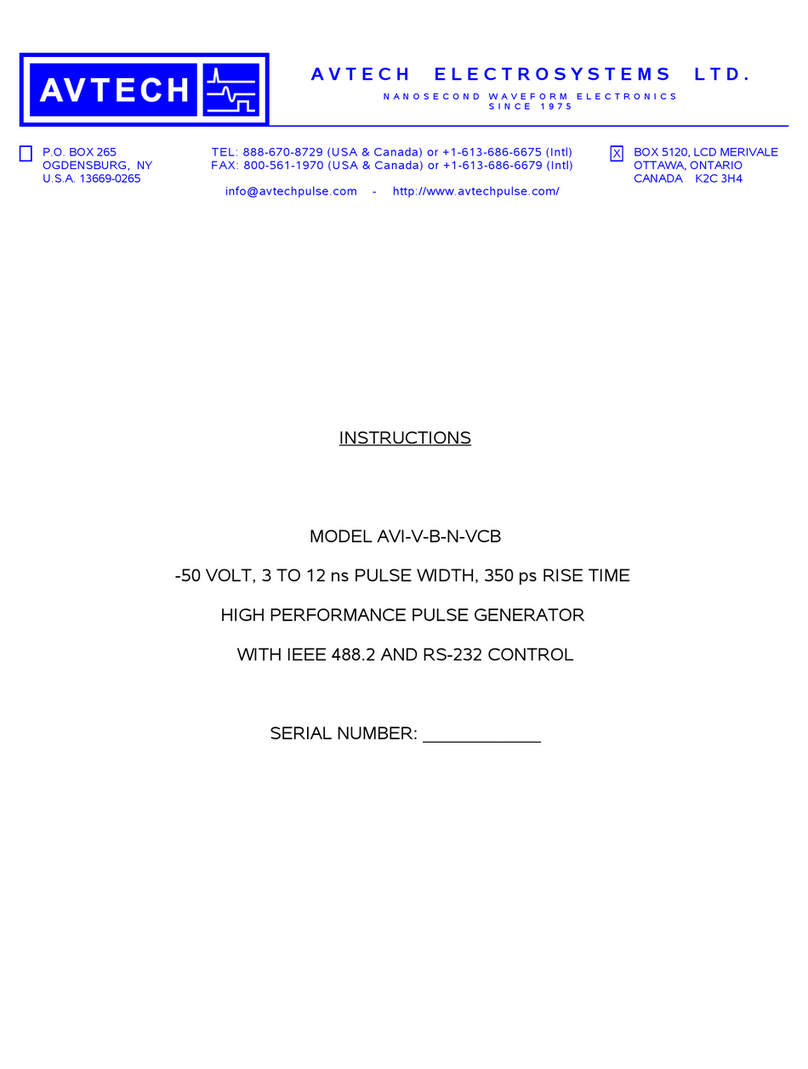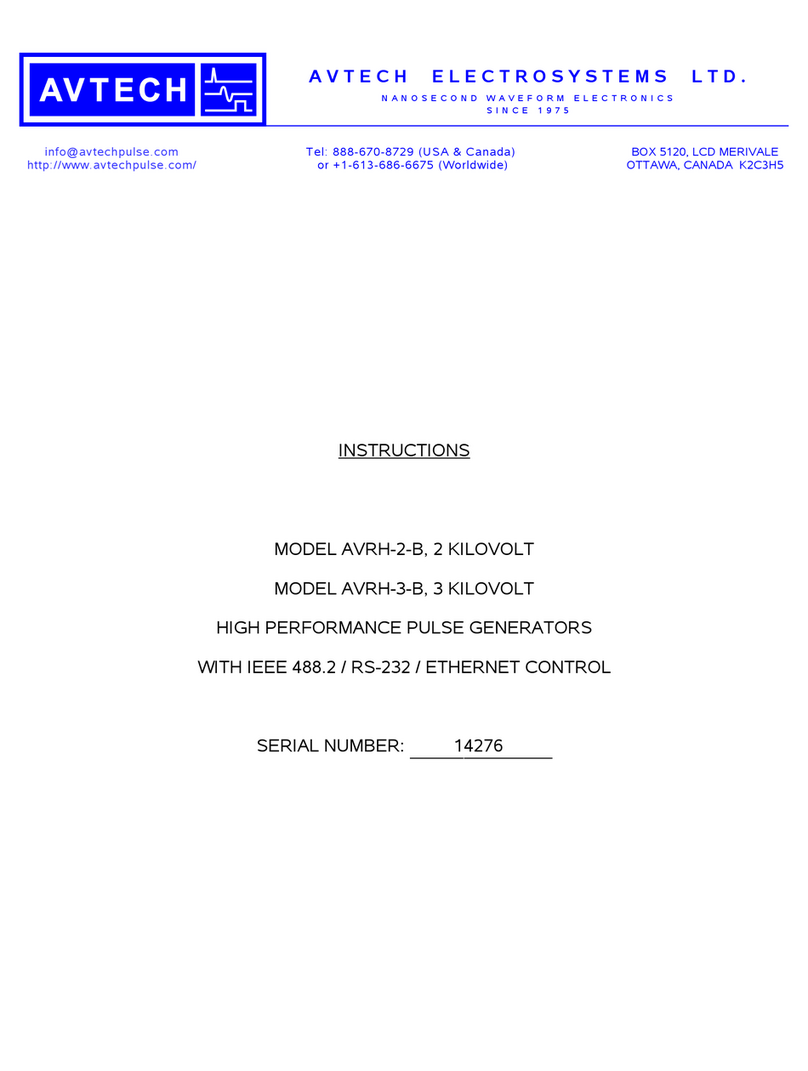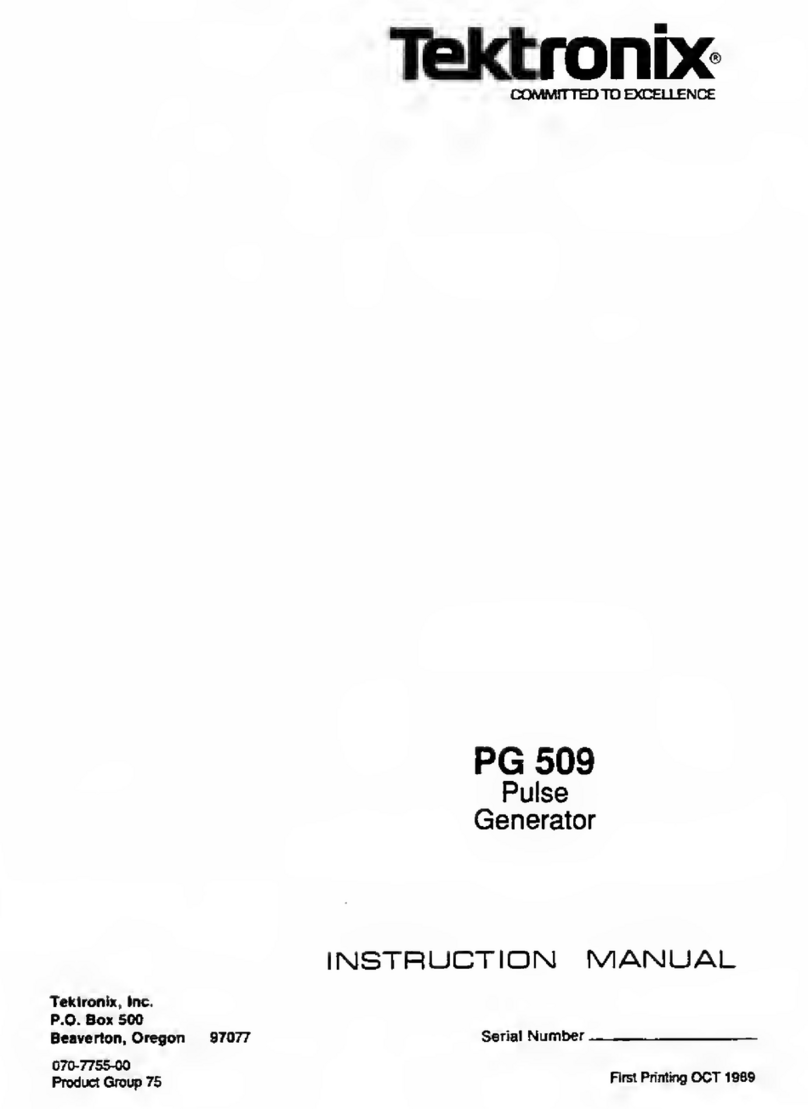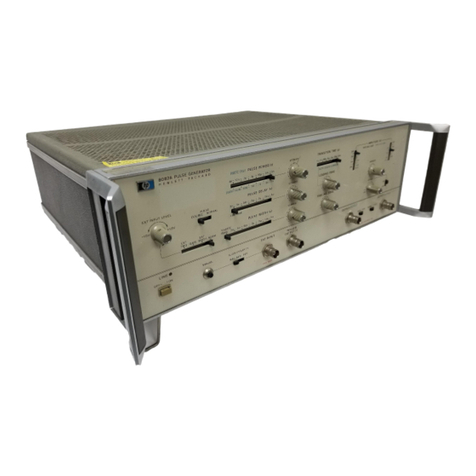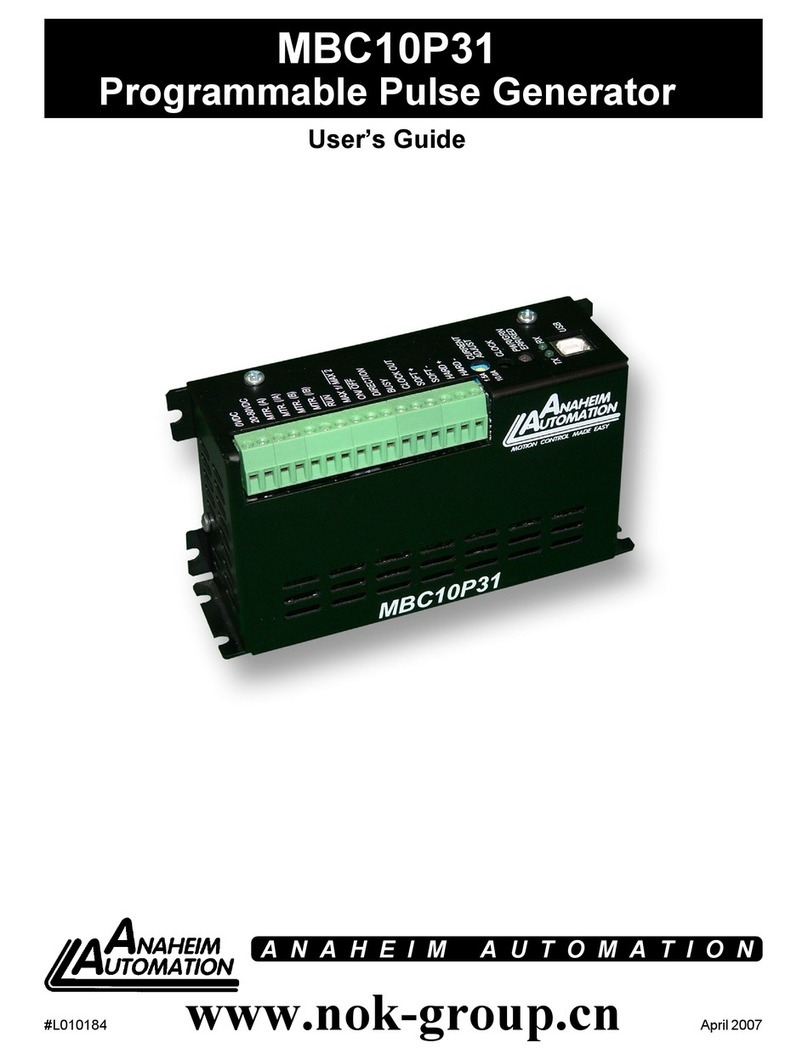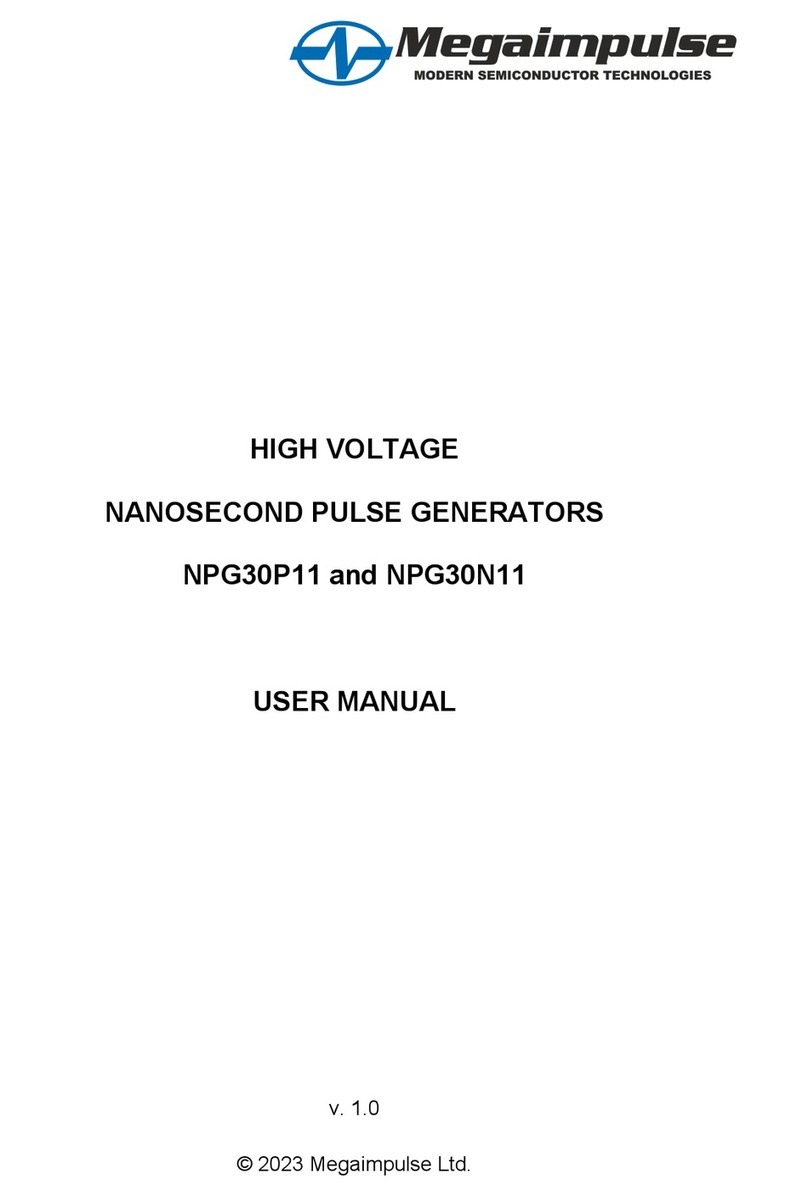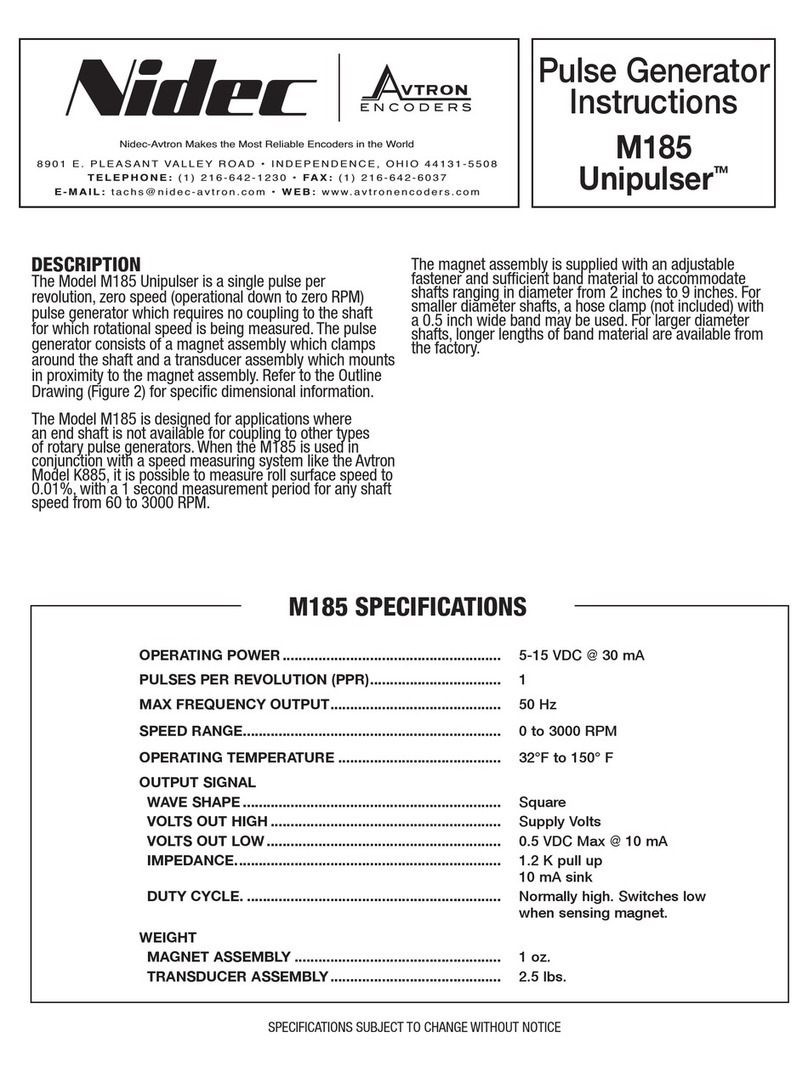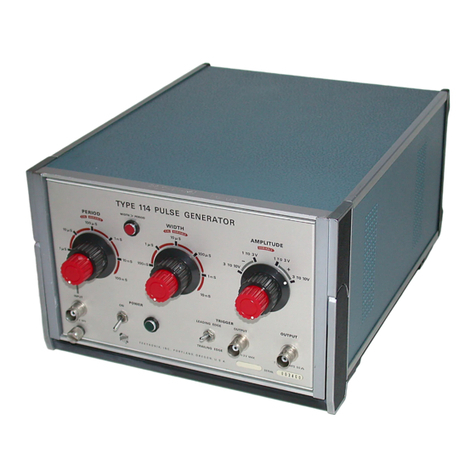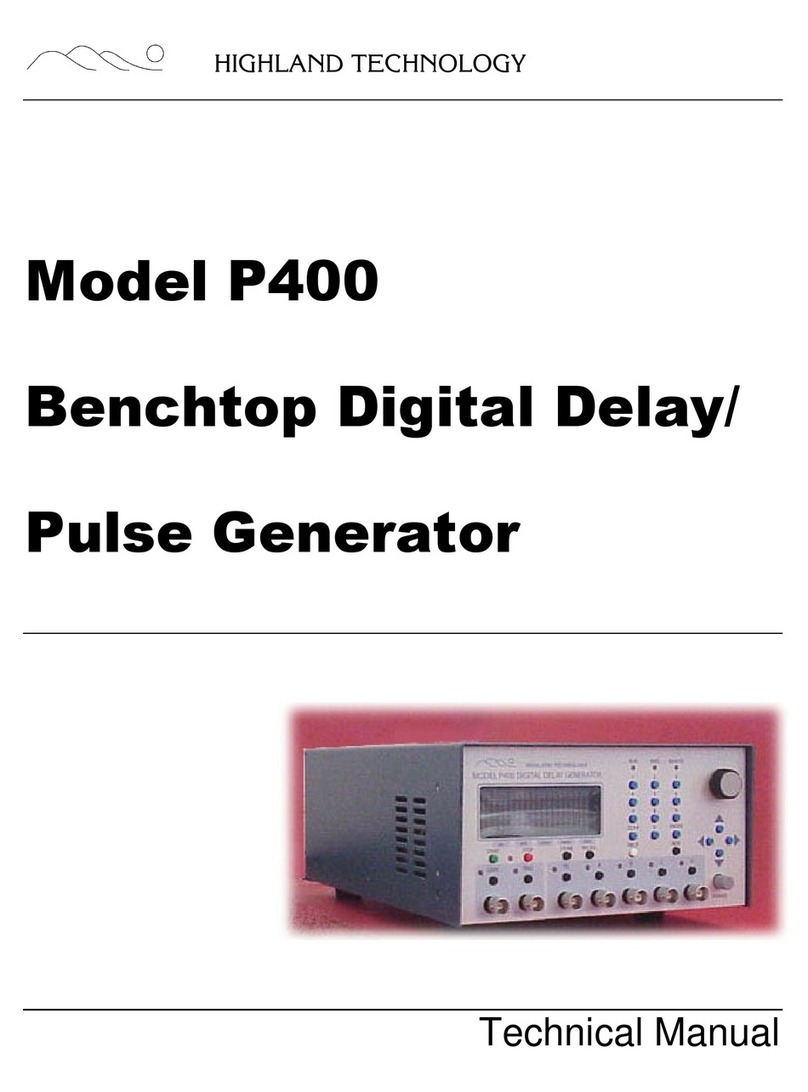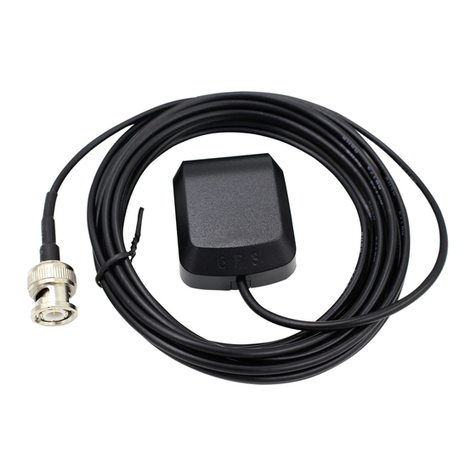SPECIFICATIONS
Model1: AVL-2A-W-B
Maximum amplitude2:
(50Ω load required7)160 V
Rise time (20%-80%): ≤ 2 ns
Fall time (80%-20%): ≤ 3 ns
Pulse width (FWHM): 3 - 400 ns
PRF: 0 to 20 kHz
Polarity3: Positive or negative or both (specify)
Jitter: ± 100 ps ± 0 03% of sync delay (Ext trig in to pulse out)
GPIB & RS-232 control1: Standard on -B units
LabView drivers: Check http://www avtechpulse com/labview for availability and downloads
Ethernet port, for remote
control using VXI-11 3, ssh,
telnet, & web:
Included Recommended as a modern alternative to GPIB / RS-232
See http://www avtechpulse com/options/vxi for details
Settings resolution: The resolution of the timing parameters (pulse width, delay, period) varies,
but is always better than 0 15% of (|set value| + 20 ns)
The amplitude resolution is < 0 1% of the maximum amplitude
Settings accuracy: Typically ± 4% (± 2 ns or ± 4% of max amplitude) after 10 minute warmup
For high-accuracy applications requiring traceable calibration,
verify the output parameters with a calibrated oscilloscope8
DC offset or bias insertion4: Option available Apply required DC offset or bias in the range of ± 50 Volts
(250 mA max) to back panel solder terminal
Standard trigger modes: Internal trigger, external trigger (TTL level pulse, > 10 ns, 1 kΩ input impedance),
front-panel “Single Pulse” pushbutton, or single pulse trigger via computer command
Variable delay5: Sync to main out: 0 to 1 0 seconds, for all trigger modes (including external trigger)
Sync output: > +3 Volts, > 50 ns, will drive 50 Ohm loads
Propagation delay: ≤ 350 ns (Ext trig in to pulse out)
Gate input: Synchronous Active high or low, switchable Suppresses triggering when active
Monitor output option6: Provides a 20 dB attenuated coincident replica of the main output
Connectors: BNC
Power requirements: 100 - 240 Volts, 50 - 60 Hz
Dimensions: H x W x D: 100 mm x 430 mm x 375 mm (3 9” x 17” x 14 8”)
Chassis material: Cast aluminum frame & handles, blue vinyl on aluminum cover plates
Mounting: Any
Temperature range: +5°C to +40°C
1) -B suffix indicates IEEE-488 2 GPIB and RS-232 control of amplitude, pulse width, PRF and delay (see http://www avtechpulse com/gpib)
2) For operation at amplitudes of less than 20% of full-scale, best results will be obtained by setting the amplitude near full-scale and using external
attenuators on the output
3) Indicate desired polarity by suffixing model number with -P or -N (i e positive or negative) or -PN for dual polarity option Polarity reversal is achieved
via keypad or computer control
4) For DC offset option suffix model number with -OS
5) Delay must be less than the period (1 / PRF)
6) For monitor option add suffix -M The monitor, when used, will load down the main output slightly, causing a 10% drop in the maximum main output
amplitude
7) A 50 Ohm load is required Other loads may damage the instrument Consult Avtech (info@avtechpulse com) if you need to drive other load
impedances
8) These instruments are provided with a basic calibration checksheet, showing a selection of measured output parameters These measurements are
performed with equipment that is calibrated on a regular basis by a third-party ISO/IEC 17025:2005 accredited calibration laboratory However,
Avtech itself does not claim any accreditation For applications requiring traceable performance, use a calibrated measurement system rather than
relying on the accuracy of the pulse generator settings
